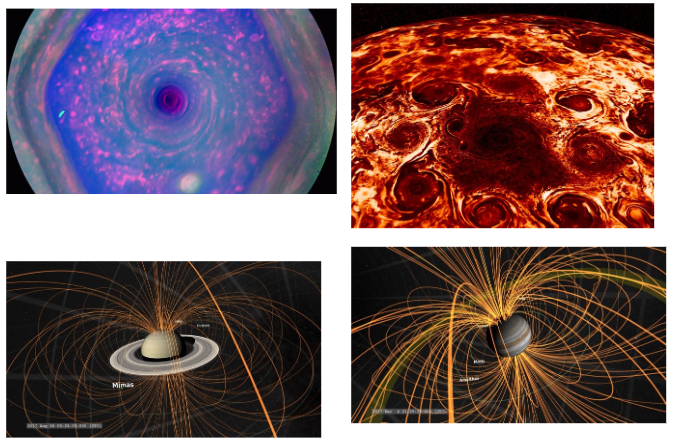Vortices on the Giant Planets
- Academic lead
- Evy Kersalé, School of Mathematics, e.kersale@leeds.ac.uk
- Co-supervisor(s)
- David Hughes, School of Mathematics, d.w.hughes@leeds.ac.uk , Chris Davies, School of Earth and Environment, c.davies@leeds.ac.uk
- Project themes
- Geophysical and Astrophysical Flows
As shown in the top panels of the figure, the Cassini and Juno missions to Saturn and Jupiter revealed striking images of vortices at the poles of the gas giant planets (Saturn (left), Jupiter (right)). These missions also provided invaluable information about the planets’ magnetism. The bottom panels show reconstructions of the magnetospheric magnetic fields.

The images prompt many fascinating fundamental research questions: for example, how are the vortices formed, how deep do they extend into the planet, and what determines this depth? One theoretical explanation is that the vortices are a convective phenomenon, with the gaseous motions strongly influenced by the planets’ rapid rotation. The aim of this project is to investigate the crucial role of magnetic fields on the formation and evolution of convective vortices, paying particular attention to the strong increase with depth of the electrical conductivity. Thus, the influence of the magnetic field will be stronger at depth than at the surface, suggesting rich dynamical behaviour and a possible explanation for the vertical extent of the vortices. The project will involve both analytical and numerical approaches to the problem, starting from linear stability problems and then moving through to examine the nonlinear evolution.
